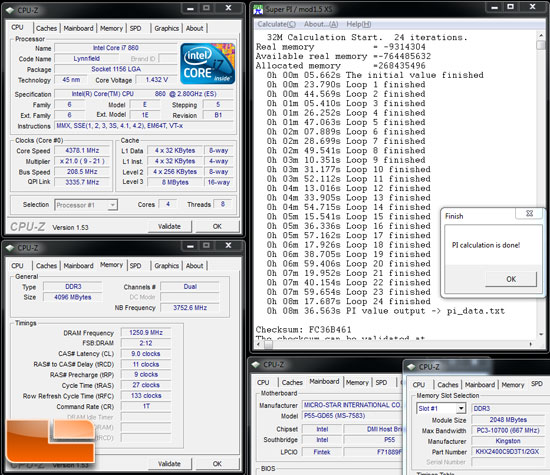Kingston HyperX 4GB 2400MHz CL9 DDR3 Memory Review
Test Results

To kick things off I ran some quick tests at various stable frequencies in order to show the performance scaling achieved through increasingly faster memory speeds. Without revealing too much about the voltage/frequency scaling of this kit, you can see that there are various steps that it was stable at and the results are widely varying. Clearly there is no point in running this kit at 1600MHz as it is limited to 7-7-7-21 timings which result in some less than desirable performance numbers. Strangely enough the Sandra Multimedia benchmark isn’t affected by memory bandwidth but the WinRAR test is completely opposite with a modest 7% increase from the best to worst result. Keep in mind that even though some of the higher frequencies are quite fast, their timings are also quite loose which results in less of a performance gain than you might expect.

Since the actual performance differences between DDR3-1600 and
DDR3-2400 aren’t that exciting I decided to also
check out the voltage and timing scaling of these fine sticks. For this
testing I considered the frequency stable if it ran Super Pi 32M
with the 2:12 divider and the CPU on the 21x multiplier. Keep in mind
that results always vary between kits but so long as the ICs used in
your kit are the same as in this kit then the results should be close.
The most dramatic thing I noticed about this kit was the insane
scaling with TRCD. The looser it was the higher the kit scaled. This is
most obvious with the CAS9 1.65v and CAS7 1.65v results. Slightly less
dramatic is what I’d consider to be horrible voltage scaling. Going
from 1.65v to 1.70v usually yields a 20MHz to 50MHz bump and then going
from 1.70v to 1.75v typically yields a similar bump. With these sticks
I gained sporadic frequency bumps going to 1.70v but nothing scaled
going to 1.75v which was shocking.
For those curious, here’s a screen shot of the DDR3-2500 run.
Considering how blazing fast DDR3-2400MHz is, I’m not displeased at all
that the kit didn’t scale much higher. However I am a bit displeased
with the atrocious CAS7 performance but more on that in the conclusion.


Comments are closed.